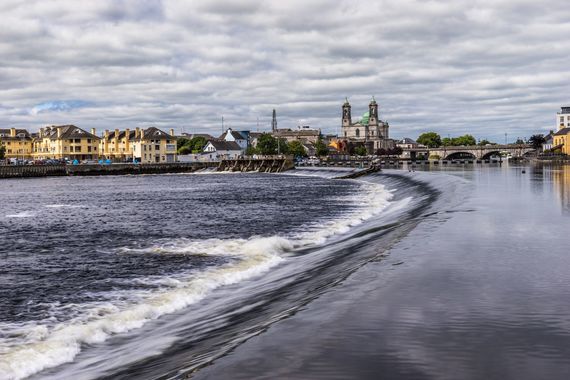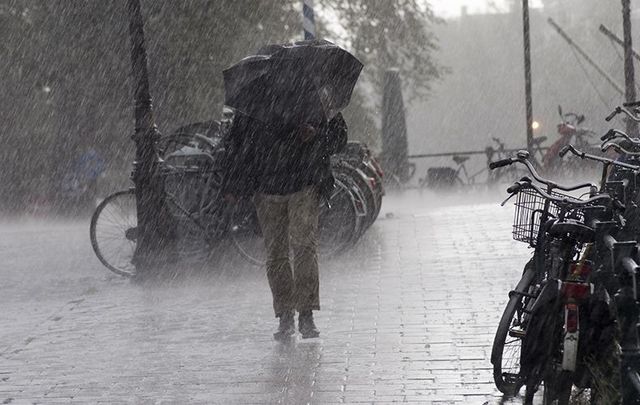Given Ireland's Victorian-era water pipes and environmentally dubious and wasteful water scheme, there is no end in sight to rainy Ireland's water crisis.
It has plenty of rain, yet Ireland confronts a water crisis. The Dublin area and its growing population is serviced by Victorian-era pipes which leak badly. Rather than replace pipes, Ireland plans an environmentally dubious and wasteful 1.3 billion euro scheme to divert the River Shannon 170 km from near Limerick to Dublin. Finalized, but under independent review before funding, this project is a waste of money and risks serious environmental harm to a river at the heart of a nation.
Leakage estimates from Dublin area pipes range from between 37 and 57 percent daily. Irish Water, a new but unpopular state agency (for its role in seeking public charges for drinking water), expects population growth of over 500,000 in the Dublin region over the coming decades –straining the porous system. Irish Water acknowledges the problem: “…the age and the condition of the pipes, poor performance of certain pipe materials, soil conditions, the length of the network (low connection density) and the lack of investment in water infrastructure over the past 150 years.”
Dubliners use only 43 percent of the water entering the system each day. If Dublin reduced leakage to 20 percent, the region would have 112 percent spare capacity.

Leakage estimates from Dublin area pipes range from between 37 and 57 percent daily.
Emma Kennedy, a forensic attorney, using Irish Water’s data to challenge its assumptions, says: “If I was a Dubliner, I would be concerned about leakage and the quality of water…Leaky supply pipes are running alongside sewage pipes that are leaking too.” Yet, Irish Water concludes fixing leakage is not viable due to costs and disruptions.
To growing grassroots and political opposition, diverting the Shannon is absurd, especially if losing half the water sent and if Dublin’s pipes must eventually be fixed. They worry reduced flows into the lower Shannon near Limerick will lead to silt blocking commercial channels and lower levels at the extraction location near Lough Derg are likely to produce toxic algae blooms and accelerated eutrophication – damaging ecology and tourism.
A preliminary environmental survey notes absent mitigation, risk of damage to riparian margins, pollution of surface water receptors via spillage or discharge of pollutants, and elevated suspended solids and siltation through run-off to watercourses, and pollution of groundwater sources. The River Shannon Protection Alliance asserts: “The river is a living organism, is vital to the survival of towns, cities, and commercial enterprises, navigation, tourism, heritage, and a vast range of flora and fauna…Without a healthy river where historical levels and flow rates are not interfered with, all of these would go into decline.”

The River Shannon, at Athlone.
Promises of no negative impact from Irish Water are not convincing many locals where the pipe would extract water in western Tipperary. As one pub owner says, “They tell us they’ll only take so much but I don’t think anyone believes that. If Dublin dries up in a drought, are they going to tell the politicians up there that there’s water in Lough Derg and they can’t take it? I don’t think so.” The owner of a local pre-school asserts: “I have three-year-olds here and if you give them a bucket with a hole in it and tell them to keep it filled with water, they’ll tell you there’s no point because the water’s only disappearing out the bottom.”
There are other options such as groundwater and desalination that would diversify Dublin’s water sources. Emma Kennedy notes the Geological Survey of Ireland, “strongly suggested that the use of groundwater should not be overlooked, because it is an important natural resource that has a number of advantages over the use of surface water. It is a viable and widely available resource that would be relatively inexpensive to develop at the local level.”
Desalination comes with challenges for Ireland, both in terms of cost and environmental concerns. However, as the climate changes, renewable-powered desalination may become more viable, as London has assumed, and built. Meanwhile, education and conservation programs can contribute substantially. Ireland also would be well-served to listen to its EPA which notes that Ireland’s ranking of “pristine” rivers dropped from 500 in the 1980s to 20 today. Only 52.8 percent of surface water is considered to be in “satisfactory ecological health.”
“This is no longer about leakage,” Emma Kennedy asserts, “there can be more efficient ways of reducing leakage than replacing the pipes – this is about a water supply system that has been neglected so badly for so long that it is now barely fit for purpose. It is about a thriving, first-world city having to rely on third-world water pipes.”
Kennedy concludes: “They need emergency surgery, not maintenance. Yet in 2018 Irish Water was replacing just 25-30km of Dublin’s 9,000km of pipes, equating to 0.3%. At that rate, it will be 300 years before all of Dublin’s pipes are replaced.”
The plan is not a done deal, as Irish Water needs still to submit a final report, and accompanying independent analysis, environmental impact assessment, and a report on compliance with EU Natura requirements to the Irish planning board for funding and ministerial approval.
Meanwhile, the River Shannon Protection Alliance, comprised of those who grew up and live with the river, tending to its care, remind that the Shannon is the “jugular vein of Ireland,” and if the pipeline is “allowed to proceed, this needless scheme will result in major collateral damage economically, environmentally, and socially.” “It is a bad piece of work,” they conclude, “and a Victorian-era solution for a 21st-century problem.”
* Sean Kay, Robson Professor of Politics and Government at Ohio Wesleyan University, is author of Celtic Revival?: The Rise, Fall, and Renewal of Global Ireland, available from Amazon or directly from its publisher.




Comments